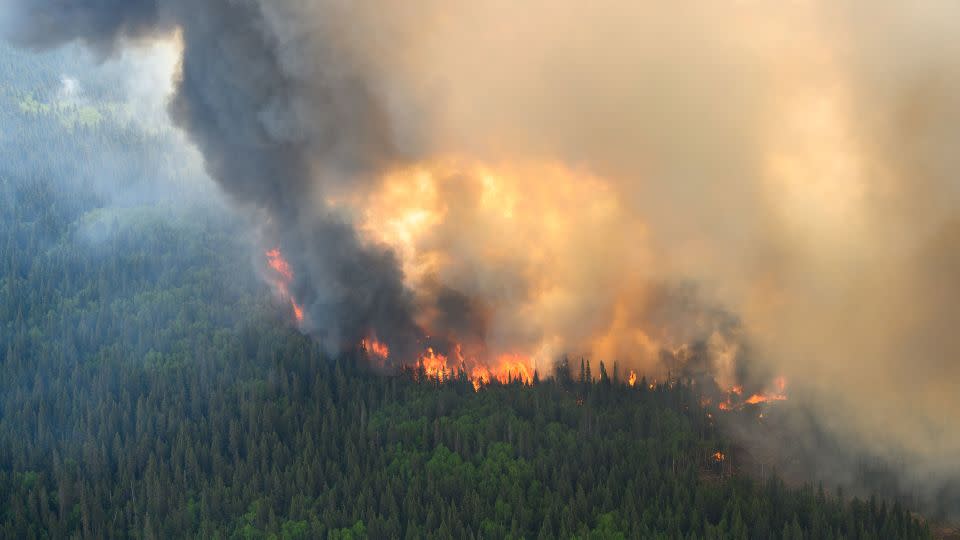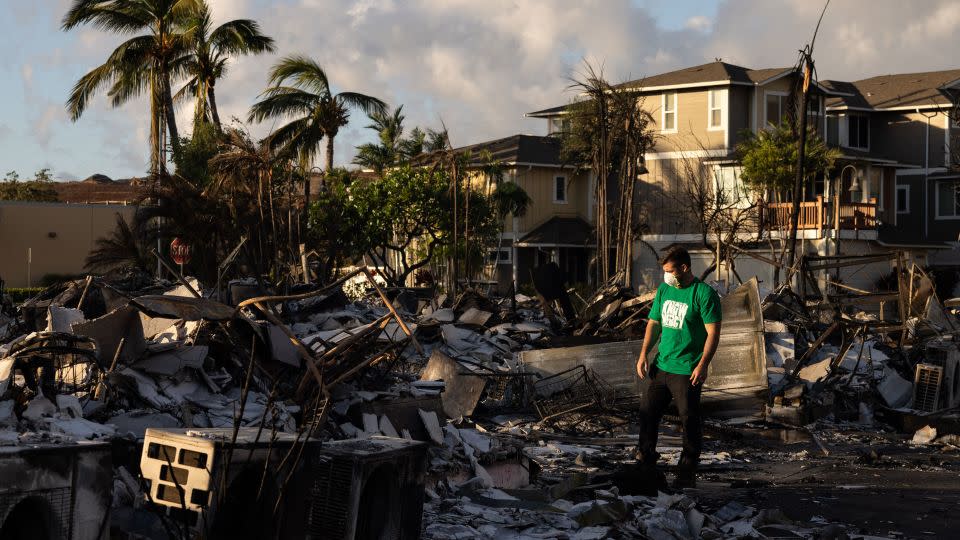Texas is no stranger to winter wildfires, but the carnage of the Smokehouse Creek fire — the largest on record after burning through more than 1 million acres — caught even the experts off guard.
Its severity was due to a perfect storm of environmental factors: highly flammable grasses and strong winds combined with high temperatures and dry conditions — the kind of extreme weather that climate change often exacerbates.
This fire adds to an ever-growing list of rapidly spreading destructive wildfires in the US and elsewhere. As humans continue to heat up the earth with fossil fuel pollution, scientists warn that these types of fires will only become more common.
Over the past several years some of the most destructive fires in the United States have occurred. The fire that tore through Maui in August, buffeted by a combination of heat, drought and strong winds, killed at least 100 people and was the deadliest wildfire in the United States in more than a century.
In California, 80% of the state’s largest wildfires occurred in the past decade, including the 2018 Camp Fire, which killed 85 people and destroyed the town of Paradise.
But the US isn’t the only one grappling with a new and alarming fire behavior. 2023 was Canada’s worst wildfire season on record, with flames scorching more than 18 million hectares (44.5 million acres) – more than double the previous record.
In Greece, the highest winds and temperatures caused deadly fires last summer, the largest ever recorded in the European Union. And in early February, wildfires tore through parts of Chile, killing more than 130 people.

“We’ve certainly seen a lot of large and catastrophic fires and fire seasons around the globe in the last decade,” said John Abatzoglou, a climate professor at the University of California, Merced.
What binds many of these fires together, he told CNN, is “the rapid rates of fire spread and the surprise of how quickly individual fires have grown — or in the case of Canada, their entire fire season .”
In many cases, climate change is playing a role, he said, “facilitating more active fire seasons and extreme fire events.”
Why did the Texas fires grow so explosively?
To understand why the fires in Texas were so fierce you have to look at this past spring, said Luke Kanclerz, a fire analyst at the Texas A&M Forest Service. Parts of the Texas Panhandle were drenched with rain, about 300% to 400% above average, which allowed grass to grow very quickly, he told CNN.
Then, a hard freeze in the late fall had all the grass gone dormant. Sapped the moisture, they were very flammable. It only took a short period of warm, dry weather for them to dry out further, providing a carpet to spread the fire.
Temperatures were extremely hot the day the fires started, climbing to more than 85 degrees Fahrenheit in some parts of the panhandle, Kanclerz said.
Strong winds helped the fire pick up, and the frontal movement of cold winds further affected it, causing the fire to change direction and spread.
The geography of the region made the situation worse. The fire was able to rage across the open landscape with little to stop it, making firefighting efforts extremely challenging. The fire grew explosively, engulfing up to 150 football fields of land every minute in the first few days.
Kanclerz said it was clear before the fires started that wind, temperature and humidity indicators added up to critical fire conditions.
“But the extent of the fire exceeded our expectations,” he said.
It is difficult to witness, he said. Huge fires in these parts of Texas are “unheard of,” he said, “but we hate to see their frequency.”
Climate change
Wildfires are fueled by a knot of factors, both natural and human, but scientists say global warming is loading the dice in favor of more and more intense blazes.
Warmer temperatures that contribute to wildfires are the most obvious climate change. The heat draws the moisture from the vegetation making it much more combustible. “Drier fuels are a critical part of the fire, the drier the fuel the easier it is to start a fire,” said Mike Flannigan, professor of wildland fire at the University of Alberta.
As well as drying out vegetation, the heat may also change the vegetation. In Hawaii, warmer summers make it easier for fast-growing and more flammable invasive species to take hold, displacing native vegetation such as shade forests.
Dry periods of drought, which are becoming longer and more severe as the world warms, also dry out vegetation and increase the likelihood of ignition and the rapid spread of fires. The Maui fires occurred as a third of the island struggled with drought.
But drought isn’t always necessary for fires to spread explosively, Abatzoglou said — evidenced by the fact that there was no drought like there was earlier in the week, where the Smokehouse Creek fire ignited and spread to.
In West Texas, shorter periods of drought can be enough to fuel massive fires when there’s a bumper crop of grass combined with high winds, he said.
And these dry conditions are occurring more frequently in the state, as elsewhere in the US. “Relative humidity has generally decreased,” John Nielsen-Gammon, Texas state climatologist, told CNN.


Scientists are still working to understand what effect, if any, global warming is having on the winds that drive wildfires.
Research has shown that climate change is accelerating the rapid intensification of hurricanes, forcing storms to explode at deadly speeds. Hurricane Dora, a Category 4 storm that passed about 700 miles south of Hawaii’s Big Island, added to the strong winds that helped drive the Maui fires.
But it’s hard to attribute climate change to the winds that fueled the Texas fires, Abatzoglou said, “any link right now is probably tenuous.”
Overall, however, climate projections “show a future of more extreme fire weather conditions for the general region,” he said.
It’s a picture that stretches across the U.S., according to a recent report from Climate Central, a nonprofit research group, which found that wildfire seasons are getting longer and more intense as climate change increases the likelihood that the an extreme type of weather that favors fires.
West Texas is one of the hardest hit states, said Kaitlyn Trudeau, senior researcher at Climate Central. For example, the Texas High Plains region experiences 32 more days of hot, dry, windy conditions compared to the 1970s, she said.
Destructive wildfires are becoming more and more a part of life in the United States, and elsewhere, Trudeau told CNN.
“As long as the climate continues to warm and the weather makes fires more common, the risks are only going to rise.”
CNN’s Rachel Ramirez contributed to this report.
For more CNN news and newsletters create an account at CNN.com